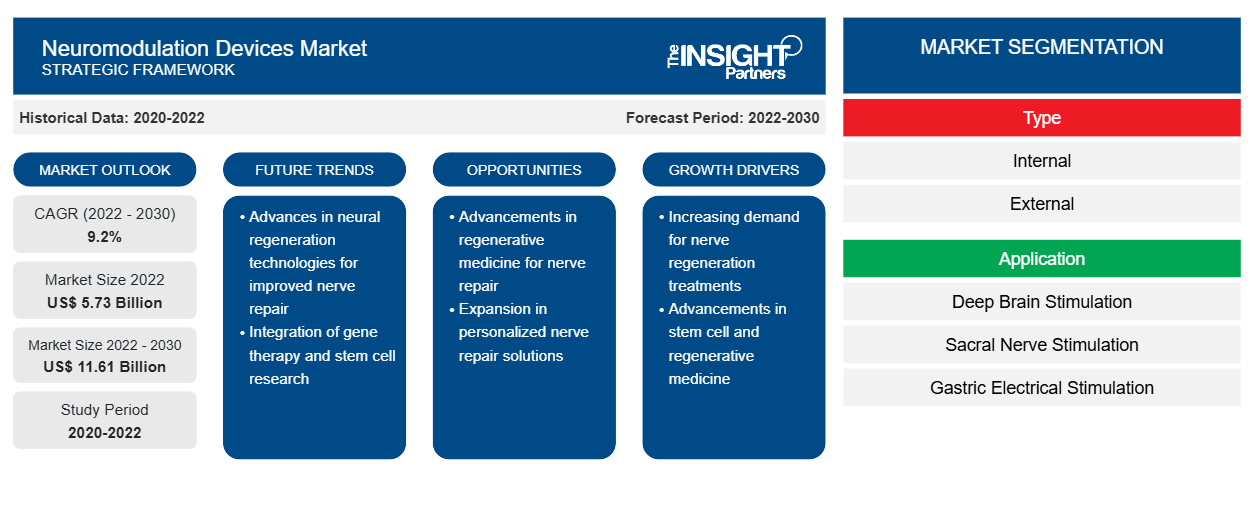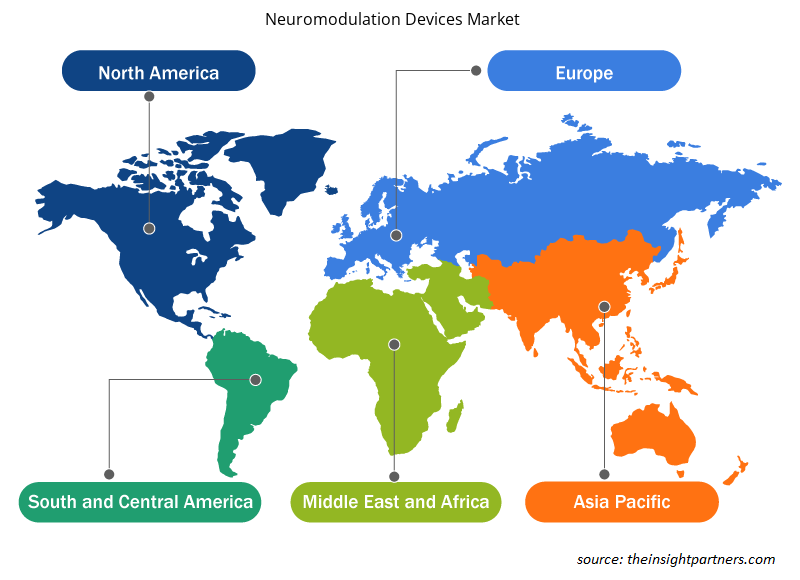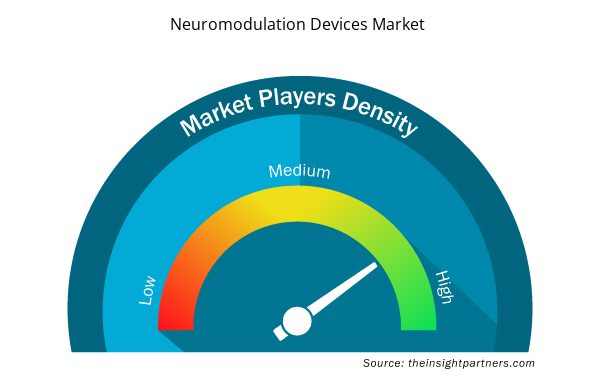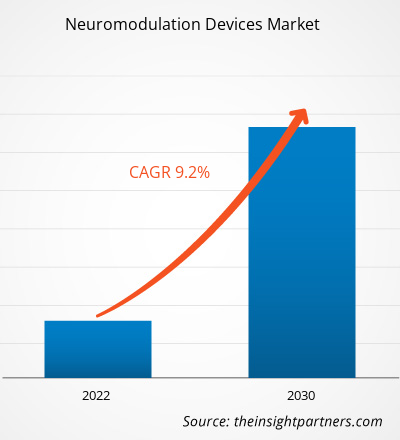[Research Report] The neuromodulation devices market was valued at US$ 5.73 billion in 2022 and is expected to reach US$ 11.61 billion by 2030. The market is estimated to register a CAGR of 9.2% from 2022 to 2030.
Market Insights and Analyst View:
The report includes growth prospects along with the current neuromodulation devices market trends and their foreseeable impact during the forecast period.
Neuromodulation use is growing rapidly, with a wide range of implantable and noninvasive technology-based methods for the treatment of neuropsychiatric and neurological disorders. Therapies such as intracranial cortical stimulation (ICS), transcranial magnetic stimulation (TMS), deep brain stimulation (DBS), and transcranial direct current stimulation (tDCS) have shown promising results across a range of neuropsychiatric and neurological disorders. Neuromodulation devices are advanced medical instruments that can adjust the activity of the nervous system. The technology is used to treat movement disorders such as dystonia, Parkinson’s disease, tremors; tinnitus; obsessive-compulsive disorder; sensory disabilities; epilepsy; bladder control; headache; chronic pain; stroke; minimally conscious state; spasticity; and spinal cord injury. Factors such as the rising cases of spinal cord injury and increasing prevalence of neurological disorders contribute to the growing neuromodulation devices market size.
Market Drivers:
Geriatric population is susceptible to neurological diseases. Common neurological disorders affecting older people are neuropathy, Parkinson's disease, Alzheimer's disease, dystonia, and others. According to the United Nations Department of Economic and Social Affairs, in 2022, globally there were 771 million people aged 65 years and above. The older population is anticipated to reach 994 million by 2030 and 1,600 million by 2050. Countries such as the US and Canada have high prevalence rates of movement disorders and psychiatric disorders associated with growing geriatric populations. According to the Parkinson's Foundation, Parkinson's symptoms are common at an average age of 60.
The Canadian Psychological Association states that obsessive-compulsive disorder (OCD) affects about 2% of the population in Canada. The World Health Organization (WHO) states that epilepsy is a seizure-causing neurological disorder that affects ∼50 million people across the world. As per the American Academy of Neurology, stroke is the third leading cause of death in the US, followed by Alzheimer's as the sixth leading cause of death. Statistics from the same source show that nearly one million Americans are affected by Parkinson's, and at least 60,000 new cases are reported annually. The growing prevalence of neurological diseases coupled with lifestyle-related disorders such as depression and chronic pain leads to the increasing adoption of technologically advanced products.
Therefore, the rising geriatric population prone to neurological diseases, increasing prevalence of the diseases, and growing awareness regarding the tremendous burden of neurological disorders drive the neuromodulation devices market growth.
Neuroscience focuses on treating disorders such as stroke, headache disorders, multiple sclerosis, and other severe cases. In recent years, a relative shortage of the skilled neurological workforce has been witnessed even in developed countries. In the US, there are over 5,700 hospitals; however, these hospitals have less than 3,700 neurosurgeons. A prominent factor responsible for the inadequacy of the neurosurgical workforce is the inability to produce adequately trained neurosurgeons in a suitable amount of time. Neurology facilities with advanced technology are available in urban areas. However, limited treatments are offered in rural areas due to the shortage of expert professionals. Therefore, the shortage of skilled neurosurgeons hinders the neuromodulation devices market growth.
Customize This Report To Suit Your Requirement
You will get customization on any report - free of charge - including parts of this report, or country-level analysis, Excel Data pack, as well as avail great offers and discounts for start-ups & universities
Neuromodulation Devices Market: Strategic Insights

- Get Top Key Market Trends of this report.This FREE sample will include data analysis, ranging from market trends to estimates and forecasts.
Customize This Report To Suit Your Requirement
You will get customization on any report - free of charge - including parts of this report, or country-level analysis, Excel Data pack, as well as avail great offers and discounts for start-ups & universities
Neuromodulation Devices Market: Strategic Insights

- Get Top Key Market Trends of this report.This FREE sample will include data analysis, ranging from market trends to estimates and forecasts.
Report Segmentation and Scope:
The “neuromodulation devices market analysis” has been carried out by considering the segments—type, application, biomaterial, and end user.
Segmental Analysis:
The neuromodulation devices market, by type, is bifurcated into external and internal. The internal neuromodulation segment held a larger neuromodulation devices market share in 2022. However, the external neuromodulation segment is likely to register a higher CAGR during 2022–2030. The term "internal neuromodulation" describes the use of medical devices that provide electrical, chemical, or other forms of stimulation for specific neuronal targets in order to modulate or alter the nervous system's activity. This technique is used to treat neurovascular illnesses, movement abnormalities, epilepsy, chronic pain, and fecal and urine incontinence.
By end user, the neuromodulation devices market is segmented into hospitals, clinics, and home healthcare. In 2022, the hospitals segment dominated the neuromodulation devices market share. Due to the expansion of numerous hospitals and clinics and increased government spending to build healthcare infrastructure, the hospitals segment currently dominates the market. Additionally, the aging population is expected to result in a higher prevalence of chronic pain, propelling the demand for neuromodulation devices in hospitals.
Regional Analysis:
The scope of the neuromodulation devices market report is primarily segmented into North America (the US, Canada, and Mexico), Europe (Spain, the UK, Germany, France, Italy, and the Rest of Europe), Asia Pacific (South Korea, China, India, Japan, Australia, and the Rest of Asia Pacific), the Middle East & Africa (South Africa, Saudi Arabia, the UAE, and the Rest of Middle East & Africa), and South & Central America (Brazil, Argentina, and the Rest of South & Central America).
In terms of revenue, North America dominated the neuromodulation devices market share in 2022. The growing prevalence of neurological diseases, high spending on research and development, rising number of product approvals by the FDA, and technological advances boost the demand for neuromodulation devices in the region.
Neuromodulation Devices Market Regional Insights
Neuromodulation Devices Market Regional Insights
The regional trends and factors influencing the Neuromodulation Devices Market throughout the forecast period have been thoroughly explained by the analysts at Insight Partners. This section also discusses Neuromodulation Devices Market segments and geography across North America, Europe, Asia Pacific, Middle East and Africa, and South and Central America.

- Get the Regional Specific Data for Neuromodulation Devices Market
Neuromodulation Devices Market Report Scope
| Report Attribute | Details |
|---|---|
| Market size in 2022 | US$ 5.73 Billion |
| Market Size by 2030 | US$ 11.61 Billion |
| Global CAGR (2022 - 2030) | 9.2% |
| Historical Data | 2020-2022 |
| Forecast period | 2022-2030 |
| Segments Covered |
By Type
|
| Regions and Countries Covered | North America
|
| Market leaders and key company profiles |
Neuromodulation Devices Market Players Density: Understanding Its Impact on Business Dynamics
The Neuromodulation Devices Market market is growing rapidly, driven by increasing end-user demand due to factors such as evolving consumer preferences, technological advancements, and greater awareness of the product's benefits. As demand rises, businesses are expanding their offerings, innovating to meet consumer needs, and capitalizing on emerging trends, which further fuels market growth.
Market players density refers to the distribution of firms or companies operating within a particular market or industry. It indicates how many competitors (market players) are present in a given market space relative to its size or total market value.
Major Companies operating in the Neuromodulation Devices Market are:
- Abbott (St. Jude Medical, Inc.)
- LivaNova PLC
- Boston Scientific Corporation
- Aleva Neurotherapeutics SA
- Bioventus
Disclaimer: The companies listed above are not ranked in any particular order.

- Get the Neuromodulation Devices Market top key players overview
Competitive Landscape and Key Companies:
The neuromodulation devices market report is focused on prominent players in the market such as Abbott (St. Jude Medical, Inc), LivaNova PLC, Boston Scientific Corporation, Aleva Neurotherapeutics SA, Bioventus, EnteroMedics Inc, Nevro Corporation, NeuroPace Inc, Synapse Biomedical Inc, and Neurosigma Inc. The neuromodulation devices market forecast can help stakeholders plan their growth strategies. These companies focus on new technologies, upgrading existing products, and market expansions to meet the growing consumer demand across the world. As per company press releases, below are a few recent key developments:
- In August 2023, Medtronic plc received CE Mark approval for its Inceptiv closed-loop rechargeable spinal cord stimulator (SCS). It is the first Medtronic SCS device to offer a closed-loop feature that senses each person's unique biological signals and adjusts stimulation moment to moment, as needed, to keep therapy in harmony with the motions of daily life.
- In August 2023, Abbott received approval from the US Food and Drug Administration (FDA) for its new Proclaim Plus spinal cord stimulation (SCS) system featuring FlexBurst360 therapy. The next generation of Abbott's proprietary BurstDR stimulation, FlexBurst360 therapy offers pain coverage across six areas of the trunk and/or limbs. It facilitates programming that can be adjusted as per a person’s therapeutic needs.
- Historical Analysis (2 Years), Base Year, Forecast (7 Years) with CAGR
- PEST and SWOT Analysis
- Market Size Value / Volume - Global, Regional, Country
- Industry and Competitive Landscape
- Excel Dataset


- Aquaculture Market
- Biopharmaceutical Tubing Market
- Medical Collagen Market
- Airport Runway FOD Detection Systems Market
- Dairy Flavors Market
- 3D Mapping and Modelling Market
- Dried Blueberry Market
- Health Economics and Outcome Research (HEOR) Services Market
- Europe Tortilla Market
- Cell Line Development Market

Report Coverage
Revenue forecast, Company Analysis, Industry landscape, Growth factors, and Trends

Segment Covered
Type, Application, Biomaterial, and End User

Regional Scope
North America, Europe, Asia Pacific, Middle East & Africa, South & Central America

Country Scope
This text is related
to country scope.
Frequently Asked Questions
The neuromodulation device market, based on end user, segmented into hospitals, clinics, and home healthcare. In 2022, the hospitals segment dominated the neuromodulation devices market share.
Asia Pacific is expected to be the fastest growing region in the neuromodulation device market. The rising prevalence of neurological diseases and the development of neuromodulation devices are likely to enhance the market's growth in the coming years. China is among the most populated countries in the world, and the country has a maximum number of patients suffering from neurological disorders.
The neuromodulation device market, based on application, is segmented into metallic, polymeric, and ceramic. In 2022, the metallic segment dominated the market share. However, the polymeric segment is likely to register the highest CAGR during 2022–2030.
The neuromodulation device market, based on application, is segmented into deep brain stimulation (DBS), sacral nerve stimulation (SNS), gastric electrical stimulation (GES), spinal cord stimulation (SCS), and vagus nerve stimulation (VNS). The spinal cord stimulation segment held the largest market share in 2022 and is expected to record the highest CAGR in the market during 2022–2030.
The neuromodulation device market, based on type, is bifurcated into external and internal. The internal neuromodulation segment held a larger neuromodulation devices market share in 2022. However, the external neuromodulation segment is likely to register a higher CAGR during 2022–2030.
US holds the largest market share in neuromodulation device market. the incidence of neurovascular diseases is rising significantly, and it is among the leading causes of death across the country. Rising incidence of neurological diseases such as Parkinson's disease (PD), increasing awareness about neurological disorders, and growing investments in developing transcranial stimulators are among the main factors driving the overall neuromodulation devices market growth in the US.
The neuromodulation device market majorly consists of the players such as Abbott (St. Jude Medical, Inc.), LivaNova PLC, Boston Scientific Corporation, Aleva Neurotherapeutics SA, Bioventus, EnteroMedics Inc, Nevro Corporation, NeuroPace Inc, Synapse Biomedical Inc, Neurosigma Inc among others.
The factors that are driving growth of the market are the rising cases of spinal cord injury and increasing prevalence of neurological disorders.
Neuromodulation use is growing rapidly, with a wide range of implantable and noninvasive technology-based methods for the treatment of neuropsychiatric and neurological disorders. Therapies such as intracranial cortical stimulation (ICS), transcranial magnetic stimulation (TMS), deep brain stimulation (DBS), and transcranial direct current stimulation (tDCS) have shown promising results across a range of neuropsychiatric and neurological disorders. Neuromodulation devices are advanced medical instruments that can adjust the activity of the nervous system. The technology is used to treat movement disorders such as dystonia, Parkinson’s disease, and tremor; tinnitus; obsessive compulsive disorder; sensory disabilities; epilepsy; bladder control; headache; chronic pain; stroke; minimally conscious state; spasticity; and spinal cord injury.
Trends and growth analysis reports related to Life Sciences : READ MORE..
The List of Companies - Neuromodulation Devices Market
- Abbott (St. Jude Medical, Inc.)
- LivaNova PLC
- Boston Scientific Corporation
- Aleva Neurotherapeutics SA
- Bioventus
- EnteroMedics Inc.
- Nevro Corporation
- NeuroPace Inc.
- Synapse Biomedical, Inc.
- Neurosigma, Inc

 Get Free Sample For
Get Free Sample For